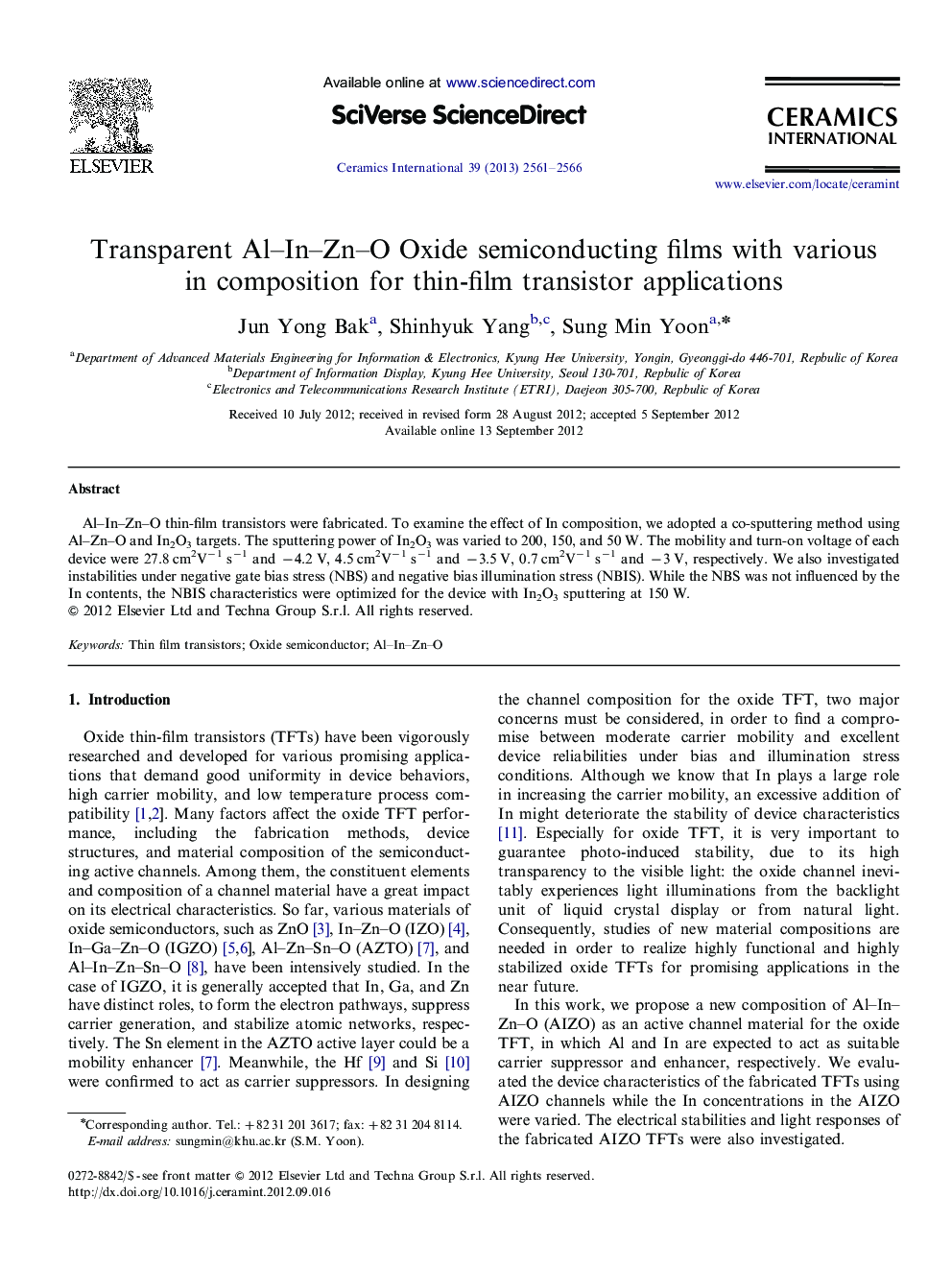| Article ID | Journal | Published Year | Pages | File Type |
|---|---|---|---|---|
| 10626113 | Ceramics International | 2013 | 6 Pages |
Abstract
Al-In-Zn-O thin-film transistors were fabricated. To examine the effect of In composition, we adopted a co-sputtering method using Al-Zn-O and In2O3 targets. The sputtering power of In2O3 was varied to 200, 150, and 50Â W. The mobility and turn-on voltage of each device were 27.8Â cm2Vâ1Â sâ1 and â4.2Â V, 4.5Â cm2Vâ1Â sâ1 and â3.5Â V, 0.7Â cm2Vâ1Â sâ1 and â3Â V, respectively. We also investigated instabilities under negative gate bias stress (NBS) and negative bias illumination stress (NBIS). While the NBS was not influenced by the In contents, the NBIS characteristics were optimized for the device with In2O3 sputtering at 150Â W.
Related Topics
Physical Sciences and Engineering
Materials Science
Ceramics and Composites
Authors
Jun Yong Bak, Shinhyuk Yang, Sung Min Yoon,
